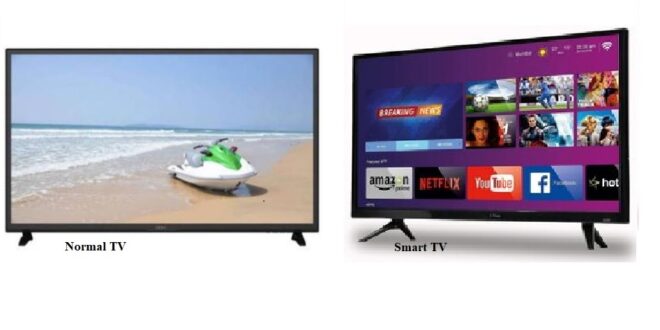In the rapidly evolving landscape of home entertainment, the dichotomy between smart TVs and regular TVs has become increasingly pronounced. As technology advances and consumer demands shift, understanding the disparities between these two television variants becomes pivotal. While both offer avenues for visual indulgence, their functionalities, features, and user experiences are distinctly disparate. Delving into their dissimilarities illuminates the contrasting realms they inhabit within the realm of home entertainment.
Definition and Core Functionality
At its essence, a regular TV, also known as a traditional or standard television, is a device primarily designed to receive and display broadcasted signals transmitted via cable, satellite, or antenna. It serves as a conduit for delivering visual content to viewers, typically requiring external devices such as set-top boxes or DVD players for additional functionalities.
Contrastingly, a smart TV is a convergence of television and internet technologies, equipped with built-in internet connectivity and an operating system. Beyond merely displaying broadcasted content, it offers an array of interactive features akin to those found on smartphones and computers, including streaming services, web browsing, gaming, and applications.
Connectivity and Content Access
One of the paramount disparities lies in their connectivity capabilities and content accessibility. Regular TVs rely solely on traditional broadcast signals or external devices for content delivery. They necessitate supplementary equipment for accessing online streaming platforms or internet browsing.
Conversely, smart TVs boast integrated Wi-Fi or Ethernet connectivity, enabling seamless access to a plethora of online content services. From streaming giants like Netflix, Hulu, and Amazon Prime Video to social media apps and web browsers, the digital universe is at the viewer’s fingertips without the need for external devices.
User Interface and Interactivity
User experience diverges significantly between the two television types. Regular TVs typically feature rudimentary interfaces with limited navigational capabilities. Interaction is confined to basic functions like changing channels or adjusting volume, often necessitating the use of multiple remotes for various devices.
Smart TVs, on the other hand, offer intuitive user interfaces reminiscent of modern computing devices. Equipped with graphical user interfaces (GUIs) and remote controls featuring built-in keyboards or voice recognition, navigating through menus, accessing apps, and searching for content becomes effortless and user-friendly. Moreover, the interactivity extends to voice commands, gesture recognition, and smartphone integration, enhancing the overall viewing experience.
Content Recommendations and Personalization
Smart TVs leverage sophisticated algorithms and artificial intelligence to provide personalized content recommendations based on viewers’ preferences and viewing history. By analyzing user behavior and content consumption patterns, they curate tailored suggestions, enhancing content discovery and user engagement.
In contrast, regular TVs lack such advanced recommendation systems, relying primarily on manual selection or pre-programmed schedules for content consumption. The absence of personalized recommendations limits the diversity of content explored and may result in a less engaging viewing experience.
Updates and Future-Proofing
Another differentiating factor is the aspect of updates and future-proofing. Smart TVs benefit from regular software updates, ensuring compatibility with the latest streaming services, security patches, and feature enhancements. Manufacturers often support their smart TV models for several years, prolonging their relevance and functionality in the ever-evolving digital landscape.
Conversely, regular TVs typically receive minimal to no software updates post-purchase. As technology advances and new content delivery methods emerge, the lack of update support may render these TVs obsolete sooner, necessitating frequent upgrades to access the latest features and services.
Cost Considerations
Cost disparity is a crucial aspect to contemplate when weighing the choice between smart TVs and regular TVs. Generally, smart TVs tend to be pricier than their regular counterparts due to the additional hardware, software, and licensing fees associated with smart functionalities. However, the price differential has diminished over time as smart TV adoption becomes more prevalent, with budget-friendly options increasingly available in the market.
Regular TVs, on the other hand, offer a more economical choice for consumers seeking basic television functionality without the bells and whistles of smart features. While they may entail additional expenses for external devices like streaming sticks or set-top boxes, the upfront cost is typically lower compared to smart TV alternatives.
Conclusion
The disparities between smart TVs and regular TVs extend far beyond their physical appearances. While both serve as conduits for visual content consumption, their functionalities, connectivity capabilities, user interfaces, and long-term viability differ significantly. Smart TVs redefine the viewing experience by seamlessly integrating traditional television with internet-based content delivery and interactive features, while regular TVs offer a more conventional approach with limited interactivity and content accessibility. Ultimately, the choice between the two hinges on individual preferences, budget considerations, and the desired level of engagement with modern entertainment technologies.
 HammBurg Be informed with latest news, reviews, entertainment, lifestyle tips, and much more.
HammBurg Be informed with latest news, reviews, entertainment, lifestyle tips, and much more.




